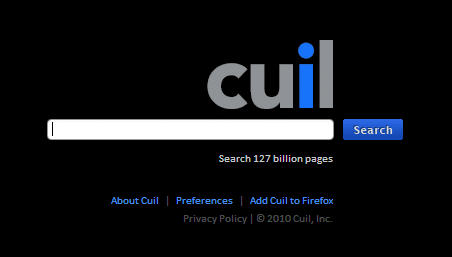It’s quite in-built in us to read stories that lay a fairy-tale picture in front of us. We tend to follow the success stories more than failed startup journeys, whereas the true experience lies in failing. A story of mission to million may sound more beneficial, inspiring and enthusing to you, than the failure saga of a business startup but believe us, there is more to learn from a fiasco than triumph.
What Startups death trends show?
- 55% startups who have failed made $1M or less and 70% companies could not raise above $5M in total. It is surprising but not very tough to believe, as the companies run through the toughest stage initially and things like limited funds or general uncertainty make it more critical.
- Another fact revealed about the death of startups states that after 2010, every year 70% of the failed companies belong to internet sector. The industry that trails behind it is of mobiles.
1. Wesabe
 Wesabe was a personal finance management website made for offering guidance on saving money. It had a very short life span i.e. less than 5 years and shut down even after an announcement was made that the company has secured US$4 million investment by 2007 to fund the site.
Wesabe was a personal finance management website made for offering guidance on saving money. It had a very short life span i.e. less than 5 years and shut down even after an announcement was made that the company has secured US$4 million investment by 2007 to fund the site.
Founders: Jason Knight & Marc Hedlund
Funding: US$4 million
Active Dates: December 2005 – July 2010
Reasons for failure:
- Among many speculations why Wesabe failed, the most dominating reason seems to be the choice of not working with Yodlee. It’s a firm that offers automatic financial data and associated with nearly 700 leading financial institutions and more than 50 million consumers. Instead of working with Yodlee, Wesabe chose to build its own tool, which took quite a time and affected its launch. The data acquisition system was much alike Yodlee’s web interface, which didn’t work either.
- Unlike Wesabe, Mint relied on Yodlee to get user data, which enabled the latter to offer better user experience. Marc Hedlund himself quoted out in one of his interviews, “Changing people’s behavior is really hard”. So, instead of offering it their way, they should have focused on user interests.
2. Nupedia
Nupedia was an English language Web-based encyclopedia giving expert information in the form of articles. The content was written by proficient authors and it was licensed as free. Nupedia was characterized by a strict review process to ensure the quality of articles been published match that of professional encyclopedias. And due to this strict screening process it could only produce 25 articles in all during its total lifetime of 3 years.
Founders: Jimmy Wales, Larry Sanger, underwritten by Bomis
Active Dates: March 2000 – September 2003 (Succeeded by Wikipedia)
Reasons for failure:
- The question, “why did Nupedia fail” has just one simple and straight answer i.e. due to its seven step article approval process. One had to apply before getting to write an article for it and send relevant credentials like a degree or certificate to prove his legitimate identity. All this made the content processing complex and led to Nupedia’s shut down within 3 years.
3. Color- A photo sharing app

Color was a social application for photos (for iPhone & Android). It was in fact known as ‘color for Facebook’ and allowed people clicking pictures and watching others’ clicked photographs too. It would group photos of friends and show relevant ones to the users. It was re-launched with video sharing feature because favorable response could not be gathered initially.
Founders: Peter Pham & Nguyen
Funding: $41 million
Active Dates: 2010 – 2012
Reasons for failure:
- The reason of shutdown is traced back to its bad user experience as people found the app confusing & difficult to use. Its user interface was found confusing and things did not change even after a re-launching effort.
- Also, the photos that one shared were open for public and not limited till friends only. People in your proximity could see each photo and video you post, whether you were friends with each other or not. This gave a good enough reason to Facebook users to stay away from color app.
The company is still working but the app got shut down right after a year of its re-launch. Pham and Nguyen confessed in an interview, “We threw out a network you don’t know how to get good at…We threw a mountain at people.”
4. Pay by touch
Pay by touch was a San Francisco based company that allowed people to pay with a swipe. You could do so with biometric sensor and pay for products/services easily. Checking information related to credit card, healthcare and personal details was also possible through biometric features thus creating an extremely safe anti-identity theft platform.
Funding: $340 million
Founder: John P Rogers
Active Dates: 2002 – May 2008
Reason for failure:
- Several things are labeled as the crucial reasons of Pay by touch disastrous shutdown. Few hold John P. Rogers’ reckless attitude responsible for it as he wasted lot of company’s money. It is said that by May 2007, the company was not even able to pay its employees.
- Business experts say that the biggest reason why Pay by touch failed was its weak business model. Merchants and consumers were not convinced enough to use it on the grounds of security concerns & tiresome payment.
- The company started buying other rims like Green Stamps, which added to its indecisive journey as it had nothing to do with Pay by touch functioning.
5. Search Me
Search me, as the name suggests was a search engine that gave results as snapshots. It had similar interface as that of Apple’s iTunes album browser and was recognized as a visual search engine. One could share the results on Facebook and Twitter as it also gave links for both.
Founders: Randy Adams and John Holland
Funding: $43.6 million
Active Dates: March 2005 – July 2009
Reasons for failure:
- Basic design problems became the foremost reason of Search me failure. For instance, users were not able to see one tile at once and other preview tiles queued up behind. It cancelled out the supposed benefits of visual search.
- It did not provide the count of search results, which did not allow users to know whether they were going through 10, 100 or 1000 results.
- Also the users faced difficulty while judging the relevance of website, since the screenshots were found unreadable by them.
- Undue use of flash made the search engine slow & therefore company failed to secure funding for sustenance.
6. Cuil

Cuil was another search engine formed by two Googlers & one IBMite. It gave results in content form only but showed longer items with thumbnails. It claimed to have a bigger index with 120 billion web pages, which is apparently more than that of Google at that time.
Active Dates: July 2008 to September 2010
Founders: Anna Patterson, Tom Costello, Russell Power
Funding: $33 million
Reasons for failure:
- Sources tell that Cuil crashed on the very first day of its launch due to overloaded server. So, the story of demise began right from its start.
- The product that was launched as Google competitor is said to have had faltering launch. It was much hyped initially but irrelevant results burst all hopes eventually.
- According to users, the pictures that appeared on Cuil search results used to be unrelated many a times and sites that appeared next to those pictures had no connection with them.
- Such technical disparities led to disappointment in users and paved way for its demise. Cuil was crashed when it was thought to be at final stage of acquirement. Google bought 7 of its patent and Anna Patterson got back to Google once again.
7. Brica Box
Brica Box was a service that brought social networking and content creation together, which was commonly known as social content platform. With its help, you could create your own social content site. Just as wordpress is for blog-creators, Brica box became a medium for creating sites based on social content like flickr & youtube.
Funding: None
Active Dates: September 2006 – June 2008
Founders: Nate Westheimer ,http://vimeo.com/1149384
Reasons for failure:
- Brica Box probably didn’t complete the much needed homework that any startup requires usually. They ended up having all the issues related to finance, traction & vision.
- Various blogs are packed with views that Nate did not focus on deciding the industry he entered and problem that Brica was to solve.
- Another reason is framed as the technical limitations that failed Brica Box.
8. Webvan
Webvan was a company from Foster city, California that is still recalled among the first few companies, which entered online grocery business. It was entitled to deliver things within 30 minutes. Although bankruptcy hit it badly, yet Amazon revived it in 2009.
Funding: $800 Million through private investors and public IPO
Founders: Louis Borders
Active Dates: 1999 to 2001
Reasons for failure:
- The company had various flaws like wrong customer segmentation & inappropriate pricing.
- Its complex infrastructure added to list of troubles and brought Webvan on the brink of end.
- This startup walked expansion ladder quite soon, without increasing its capacity to function. It spent excessive money without focusing on demand and soon ran out of cash.
Also Read:The best online resources that every startup must use
9. Joost
Joost was an on line TV service based in P2PTV technology. Joost was created by the co-founders of Skype. It was an on-demand platform that offered peer to peer service that Viacom and CBS supported. Joost became a part of content provider agreement with Viacom in 2007 and secured content deals with CNN, the NHL, Sony, CBS, and Viacom.
Funding: $45 million
Active Dates: 2006 – 2009
Founders: Janus Friis, Niklas Zennström
Reasons for failure
- The fundamental reason was that the service was not browser based and required to be downloaded, which somehow affected its popularity and acceptance.
- Another important fact leading to Joost’s decline was that it failed to offer engaging content.
- Tech experts also suggest that it used old solution to solve current issues, which could not lure users.
- Its P2P network showed signs of technical errors and made the users disinterested. The company did not work enough to fix those problems and the problems persisted even after it turned to be browser based.
- Like many failed startups, it too tried expanding quite fast without focusing on market trends.
10. Friendster
Friendster was a social networking site, which rose to fame as a social gaming platform after redesign. It was particularly credited for beginning social networking boom. In the initial months only, it was subscribed by three million users.
Founders: Jonathan Abrams
Funding: $48.5 million
Active Dates: 2002 – 2011
Reasons for failure:
- A series of crash in Users led to final acquisition of company.
- It is considered that rejecting Google’s proposal in 2003 was a big blunder as it could fetch them $30 billion.
- Tech experts also suggest that Facebook fame affected Friendster’s rise to great extent.
Conclusion:
Going through all the stories of startup failures, we found out few common reasons of why startups fail. The topmost factor that can lead to a startup death is lack of idea scalability. It happens when you move on without doing enough research before building up your business idea. Next slip-up that failed startups have committed is the lack of focus. This is the common mistake made by all the growing websites that shut down sooner or later.
Other few important factors are lack of flexibility and absence of farsightedness. Instead of sticking to rigid concepts, one should be flexible enough to adapt with changing atmosphere. Acting right from the point where things start going wrong is the right way to handle but you need to keep flexible approach for accomplishing that.
Those who fail in making a startup successful are also seen to be failing in getting their marketing act together. To reach out the target users, you have to draw together appropriate and all possible ways of marketing.
Last and not the least is a dependable team that is free of internal clashes and have great leadership. Ventures that fail usually have a chaotic team management that derails in tough times.
If you are one of the future startups who want to ensure business success, then Consult FATbit for solutions from Web marketing Experts. We help online businesses to grow to their maximum potential by helping them get launched in a right way.
Every failure teaches us something; what are your biggest learnings so far?
 Wesabe
Wesabe
